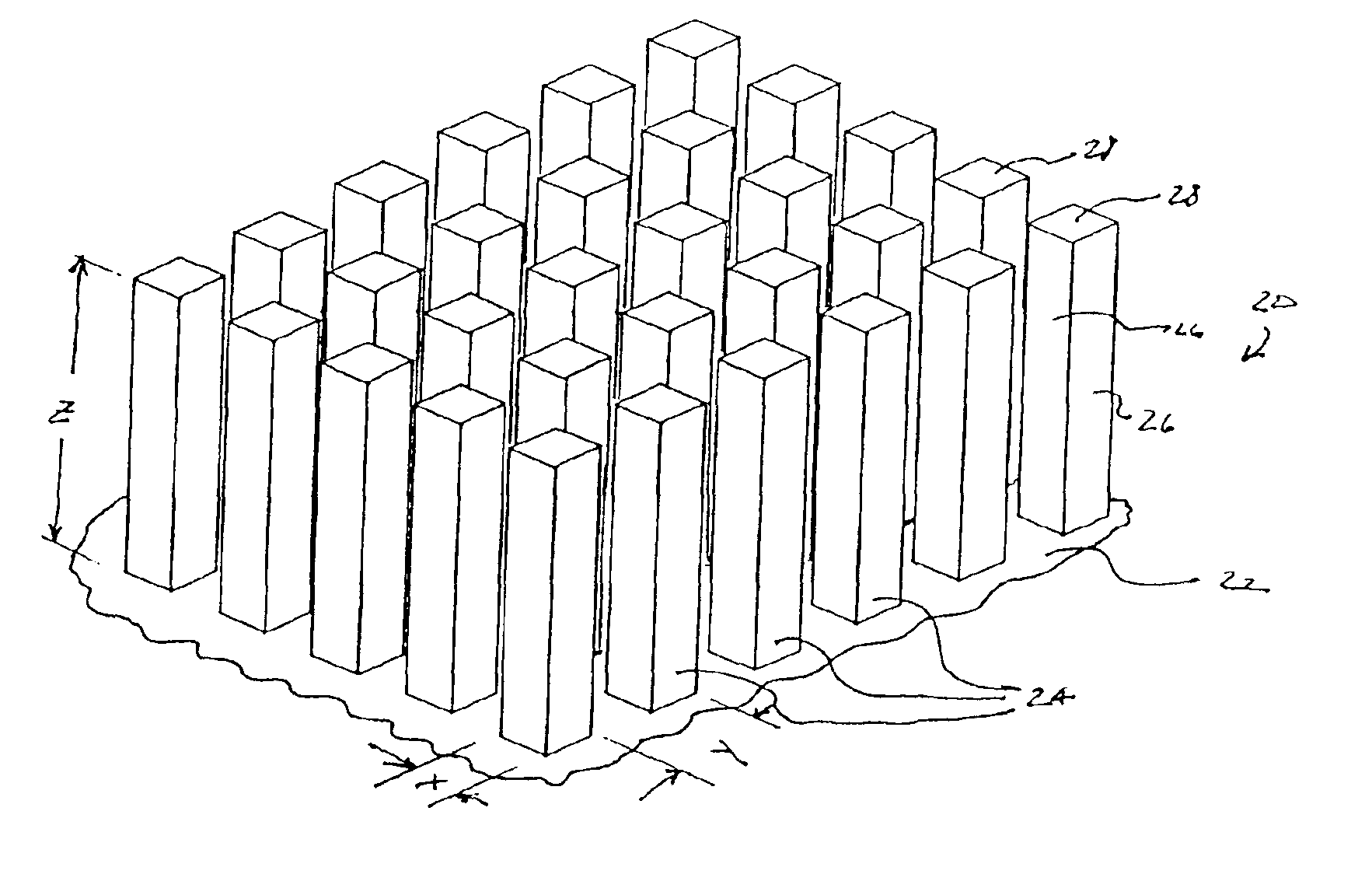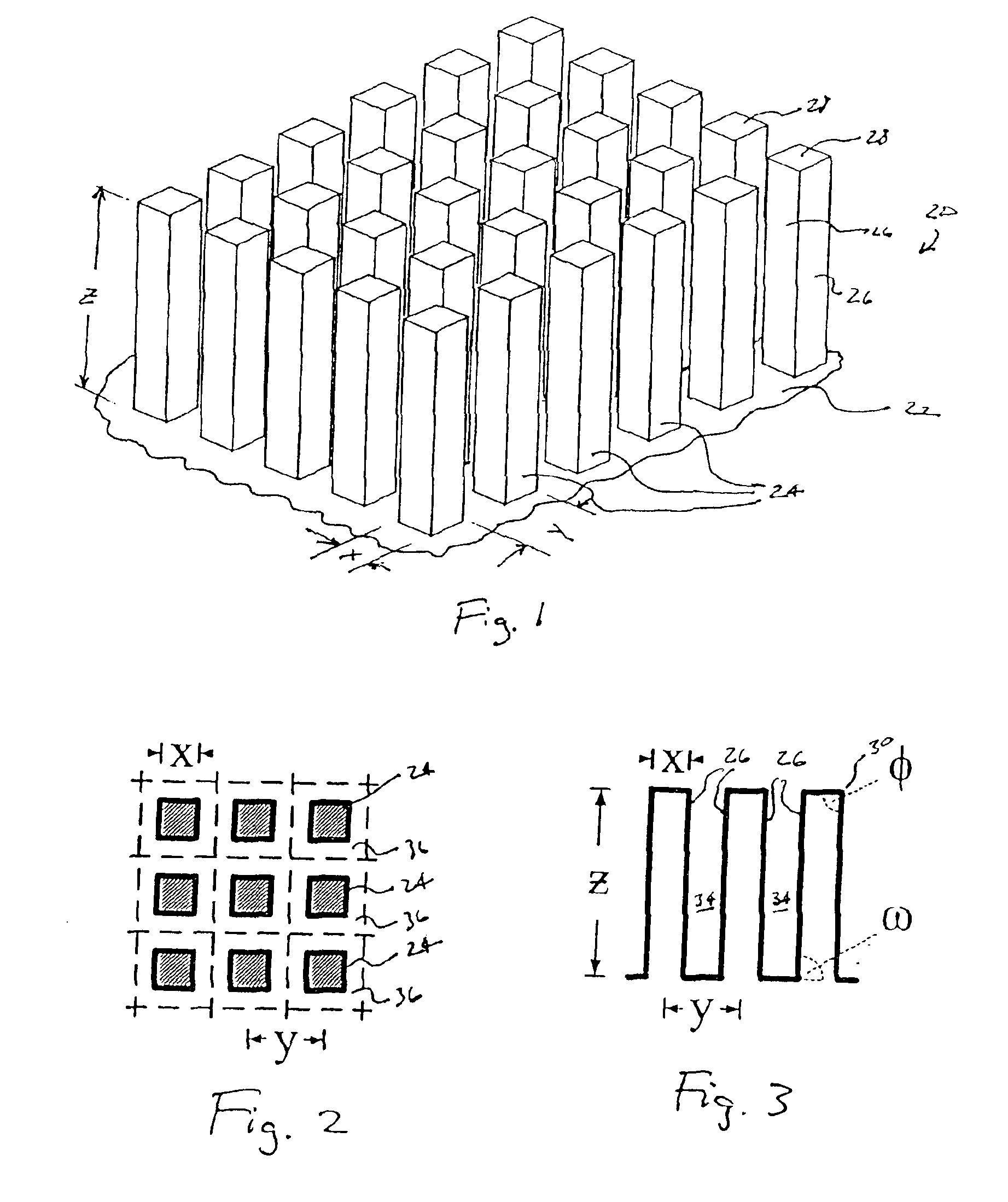Fuel cell with ultraphobic surfaces
a fuel cell and ultraphobic technology, applied in the field of fuel cells, can solve the problems of reducing the water affecting the water supply affecting the flow rate of the fuel cell, so as to improve the water drainage, inhibit any tendency, and high degree of repellency of the ultraphobic surface
- Summary
- Abstract
- Description
- Claims
- Application Information
AI Technical Summary
Benefits of technology
Problems solved by technology
Method used
Image
Examples
example
[0069]Assume an ultraphobic surface is to be provided on a fuel cell bipolar plate. Assume that the maximum expected operating pressure within the fuel cell stack assembly is 5 atmospheres, and that the bipolar plate material has the following characteristics:
θα,0=110°
θr,0=90°
The ultraphobic surface will comprise an array of square posts (ω=90°) on the bipolar plate. Repellancy of the ultraphobic surface is optimized by selecting a small x / y ratio so as to increase the actual advancing and receding contact angles of the water at the fluid contact surface:
Select x / y=λp=0.1
[0070]So that:
θα=λp(θα,0+ω)+(1−λp)θair=180°
and:
[0071]
θr=λpθr,0+(1−λp)θair=171°ΛL=-Pγcos(θa,0+ω-90°)=-51,500 Pa0.073 cos(110+90-90)=2,060,000
[0072]Referring to FIG. 17, which is a plot of the relationship between asperity spacing (y) and maximum pressure (P) for various values of x / y, with water as the liquid and with values of θα,0 and θr,0 consistent with material having the described characteristics, it may...
PUM
| Property | Measurement | Unit |
|---|---|---|
| electrical potential | aaaaa | aaaaa |
| stationary contact angle | aaaaa | aaaaa |
| rise angle | aaaaa | aaaaa |
Abstract
Description
Claims
Application Information
 Login to View More
Login to View More - R&D
- Intellectual Property
- Life Sciences
- Materials
- Tech Scout
- Unparalleled Data Quality
- Higher Quality Content
- 60% Fewer Hallucinations
Browse by: Latest US Patents, China's latest patents, Technical Efficacy Thesaurus, Application Domain, Technology Topic, Popular Technical Reports.
© 2025 PatSnap. All rights reserved.Legal|Privacy policy|Modern Slavery Act Transparency Statement|Sitemap|About US| Contact US: help@patsnap.com



